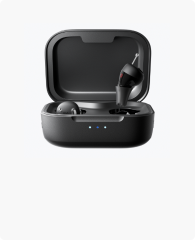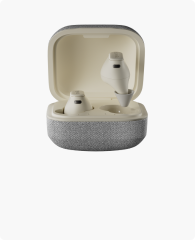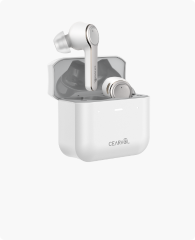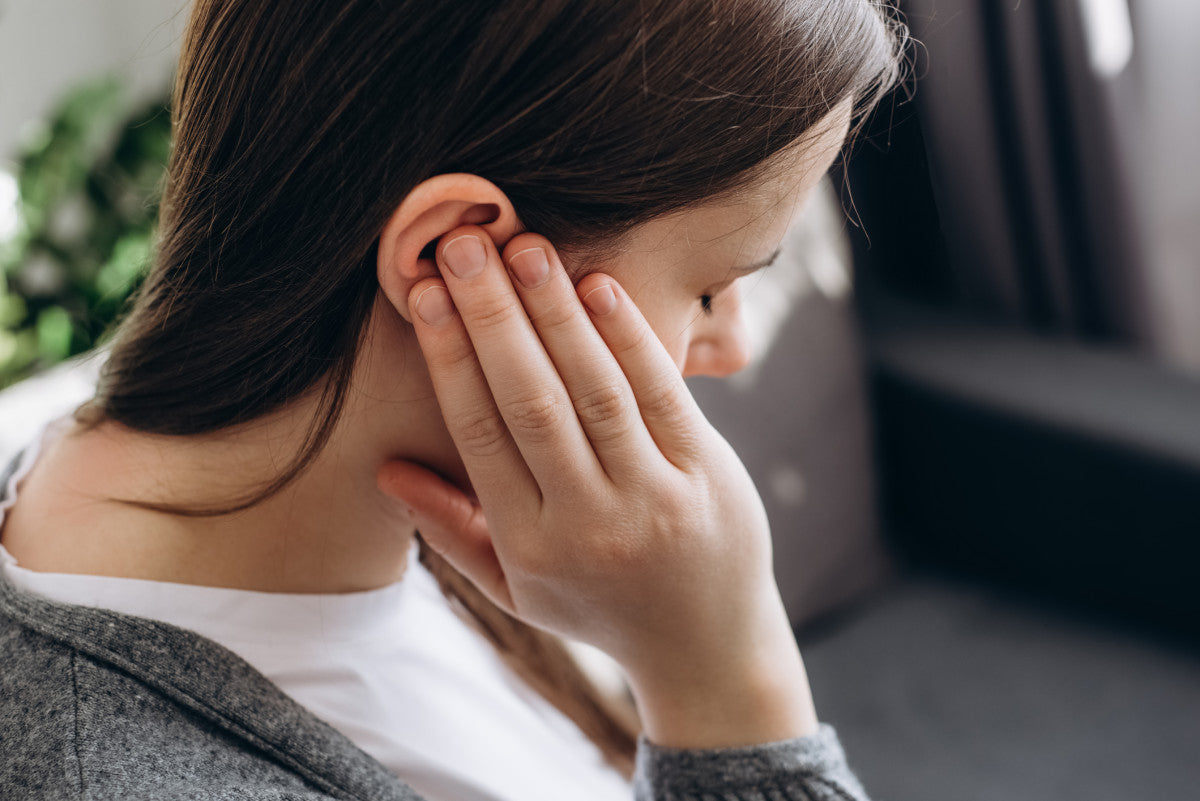I've met so many patients over the years who walk into my office saying, "It feels like water is stuck in my ear, and it's been there for days!" Some of them are swimmers, others just got out of a shower or bath, and some simply woke up with that clogged, sloshy sensation. If this sounds familiar, you're definitely not alone—and there's a lot we can do to help.
In this post, I'm going to walk you through why water gets stuck in your ear, why it sometimes lingers for days, and most importantly, what to do if water is stuck in your ear. As a hearing specialist, I've seen firsthand how even something as simple as trapped water can lead to discomfort, temporary hearing loss, or in some cases, infection if not handled properly.
Whether you're here because water got stuck in your ear after swimming, or you just can't shake that blocked feeling, I'll help you understand the cause—and what steps you can take to fix it, fast.
🚀 Navigate This Post
- ➤ Part 1: Why Does Water Get Stuck in My Ear in the First Place?
- ➤ Part 2: When Water Stuck in Ear Won't Go Away—Here's Why?
- ➤ Part 3: What to Do If Water Is Stuck in Your Ear – Simple Fixes You Can Try at Home?
- ➤ Part 4: When Water Stuck in Your Ear for Days Becomes a Bigger Problem?
- ➤ Part 5: How to Prevent Water from Getting Stuck in Your Ears Again?
- ➤ Part 6: What Should I Do If I Can't Get the Water Out?
You may also be interested in:
Part 1: Why Does Water Get Stuck in My Ear in the First Place?
Let's start with the big question: why does this happen at all?
The answer often lies in the structure of your ear canal. For some people, especially those with narrow or curved ear canals, it's very easy for water to get trapped. Add in a bit of natural earwax and the moisture can become sealed in, creating that unmistakable "water stuck in ear" sensation.
I've had patients tell me, "I didn't even swim—just washed my hair, and boom, it feels like water is stuck in my ear." That's because even a small amount of moisture entering the ear at the wrong angle can stay there. And if it doesn't drain out? Well, you know the feeling—muffled sounds, slight pressure, maybe even a bubbling or tickling sensation inside your ear canal.
If you're already wearing hearing aids—or planning to—it's even more important to keep your ears dry and healthy.

Diamond X1 - Best Hearing Aids with Bluetooth
Newcomer Price
$249.99 $309.99
- ✔ Adaptive sound modes for clear hearing.
- ✔ Bluetooth for calls & streaming.
- ✔ App-controlled, customizable adjustments.
- ✔ Rechargeable & fast charging.
- ✔ Ideal for mild to moderate hearing loss.
Next, let's look at what causes that water to linger and how to tell the difference between a simple blockage and a potential problem.
Part 2: When Water Stuck in Ear Won't Go Away—Here's Why?
So now we understand how water gets trapped—but what if it's been days and that blocked feeling just won't go away? At this point, most people start searching online with questions like "water stuck in ear for days" or "why does water get stuck in my ear after swimming?"—and that's when it can feel worrying.
Let me break down what might be going on and how to spot when it's more than just a minor annoyance.
1. Trapped Water Can Mix with Earwax
Sometimes, the issue isn't just water—it's a combination of water and wax. When water enters your ear and hits a bit of wax, it can create a sticky plug that blocks your hearing and makes it harder for moisture to escape. That's why you may feel like something is "sloshing" even when your outer ear feels dry.
If you suspect this might be the case, I recommend checking out this guide on how to remove earwax safely—never use cotton swabs, which tend to push wax deeper.
2. Swelling and Inflammation After Swimming
If water is stuck in your ear after swimming and your ear starts feeling warm, itchy, or painful, you might be dealing with what we call swimmer's ear—a type of external ear canal infection. It's not uncommon, especially in summer months or if you've been in pools or lakes.
This kind of infection needs attention. The CDC has a helpful overview on swimmer's ear, and if symptoms persist, it's best to see a healthcare provider.

3. Narrow Ear Canals or Skin Conditions
Some people have anatomical differences—narrow or curved ear canals, for instance—that make it more likely for water to stay inside. Others might have skin conditions like eczema that can cause the ear canal to swell slightly, making it harder for water to drain.
In these cases, it may feel like "water is stuck in my ear all the time," even when it's not. That feeling of pressure or fullness could be from inflammation or even dry skin.
Don't worry—we'll talk more in the next part about how to actually get the water out, step-by-step, no matter what's causing the blockage.
Part 3: What to Do If Water Is Stuck in Your Ear – Simple Fixes You Can Try at Home?
So, you've confirmed it—there's water stuck in your ear, and it's just not budging. Maybe it's been hours, maybe days. The good news? There are several simple techniques you can try right now at home to get relief. Let me walk you through them like I would a patient sitting in my clinic chair.
1. Gravity and Movement Can Do Wonders
The first thing I always suggest: try gravity. Tilt your head toward the side with the blocked ear and gently tug on your earlobe to straighten the canal. Sometimes that's all it takes to get water out of your ear—you'd be surprised how often that works!
If it doesn't, try hopping on one foot (yes, really!) with the affected ear facing downward. It sounds silly, but I've had more than a few people come back and say, "I tried it, and it actually worked!"
Want more practical tips like this? Check out our detailed guide on get water out of your ear for more DIY methods.
2. Use a Hair Dryer (Safely)
This is another trick I often recommend—but caution is key. Set your hair dryer to the lowest heat setting and hold it at least a foot away from your ear. Gently move it back and forth for about 30 seconds. The warm air can help evaporate moisture stuck in the canal.
Remember, don't overdo it. If it feels too hot or uncomfortable, stop right away.
3. Try the Valsalva Maneuver
This technique involves gently blowing air through your nose while keeping your mouth closed and nostrils pinched shut. It can help open the Eustachian tubes and relieve that full, water-stuck sensation, especially if the issue is deeper inside the ear.
But again—go easy. Don't blow too hard, or you might cause more harm than good.
These methods often work for mild cases, but what if the water still won't come out? That brings us to our next point: when to stop trying at home and see a professional.
Part 4: When Water Stuck in Your Ear for Days Becomes a Bigger Problem?
Most of the time, when you get water stuck in your ear, it drains on its own within a few hours. But what happens when that feeling doesn't go away? When it's been days, and you're still telling people, "It just feels like water is stuck in my ear"?
That's when it's time to pay closer attention.
1. Persistent Moisture Can Lead to Infection
When water is stuck in your ear for days, the moist environment becomes a perfect breeding ground for bacteria. That's exactly how swimmer's ear develops—an infection of the outer ear canal. The longer the water stays, the higher the risk.
At first, you might only feel fullness or mild discomfort. But if the feeling intensifies, or you notice redness, itching, or even discharge, you shouldn't wait. A healthcare provider can prescribe medicated drops to clear the infection before it worsens. You can also learn more about swimmer's ear and how to prevent it here.
2. Hearing May Be Affected—Temporarily or Longer
Another sign that something more serious is going on: your hearing seems muffled or dull on the side where the water is trapped. That "plugged up" feeling could be from water pressure, impacted wax, or inflammation. If it lasts more than a couple of days, don't ignore it.
This is also where a reliable hearing aid—like the Cearvol hearing aids—can help after recovery. If water exposure has triggered temporary hearing difficulty or worsened existing hearing loss, a discreet OTC option can provide clarity and comfort until your ears are back to normal.
Just remember: hearing aids should only be worn in dry ears. Never use them while water is still present.
3. You Might Not Be Dealing With Water at All
Now here's something I've seen more than once: a patient insists it feels like water is stuck in their ear, but after examination, there's no water. Sometimes, that sensation is caused by inflammation, skin irritation, or even nerve sensitivity—not liquid.
If you've tried everything and the feeling persists, it's best to let a professional take a look with an otoscope. Self-diagnosis only gets you so far.

Part 5: How to Prevent Water from Getting Stuck in Your Ears Again?
Once you've dealt with the annoyance of water stuck in ear after swimming, you probably never want to go through it again. Thankfully, there are easy ways to prevent water from getting stuck in your ears in the future—whether you're swimming laps or simply taking a shower.
1. Keep Your Ears Protected in the Water
The most effective method? Wear waterproof earplugs or a swim cap that covers your ears. If you're a regular swimmer, these tools are non-negotiable. They block water from entering your ear canal and can drastically reduce the risk of water retention and infections.
Plus, drying your ears thoroughly with a clean towel or a gentle blow from a hairdryer after swimming can help, too.
2. Keep Wax Under Control
Excessive earwax can trap water in your ears. It acts like a sponge and creates barriers that block water from flowing back out. That's why earwax management is a key part of prevention.
But don't go digging around with cotton swabs—those often push wax deeper and cause more harm. Instead, use safe and approved methods. I recommend checking out our full guide on how to remove earwax safely without damaging your ear canal.

3. Know When to Stay Dry
If you've recently had an ear infection or surgery—or if you're prone to swimmer's ear—it's best to avoid water exposure altogether for a while. Use a shower cap and avoid submerging your head. Better safe than sorry.
Part 6: What Should I Do If I Can't Get the Water Out?
If basic at-home methods (like tilting, tugging, or using a blow dryer) don't work, and it's been more than 24–48 hours, it's time to see a healthcare provider. Especially if it's starting to hurt or affect your hearing.
Final Thoughts: Listen to Your Ears—Literally
Whether you've got water stuck in your ear for an hour or water stuck in ear for days, don't ignore it. That uncomfortable sloshing or muffled sensation is your ear's way of telling you something's off. Take it seriously, act early, and you can avoid complications.
And if water exposure has revealed signs of hearing loss—or made an existing problem worse—there are simple ways to regain clarity. Our Cearvol hearing aids are a smart solution for adults experiencing mild to moderate hearing loss, especially after prolonged exposure to moisture or ear infections. They're rechargeable, Bluetooth-compatible, and comfortable for all-day wear.
Still have that feeling like water is stuck in your ear? Try the tips above, listen to your body, and don't hesitate to seek help. Your ears are worth it.








Leave a comment
All comments are moderated before being published.
This site is protected by hCaptcha and the hCaptcha Privacy Policy and Terms of Service apply.